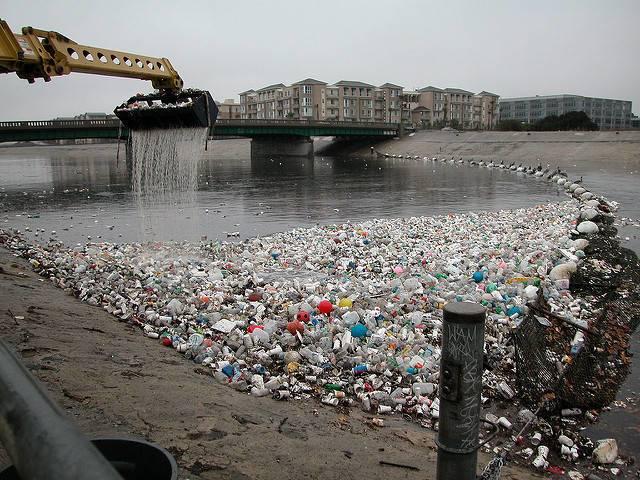
In 1960, less than 1 percent of municipal waste by mass in high- and middle-income countries was plastic. By 2005 that ratio soared to 10 percent, and that increase keeps ticking upward. As a result, for each person living on Earth, there is close to one ton of plastic on the planet.
That is the estimate reached by a study published by the American Association for the Advancement of Science. The authors mined data collected by various plastics marketing groups between 1950 and 2015 in order to estimate the total amount of plastic resin manufactured worldwide. The researchers then measured that data against statistics they collected on recycling, incineration and discard rates. For information related to China – important as that country has become the world’s manufacturing base – the authors poured over Chinese government reports and publications. For other countries, World Bank data on waste management rates was analyzed. Lifetime distributions for eight different product sectors were also evaluated to gauge how long plastics are used before they are finally thrown away. Finally, the research team’s model also used sensitivity analysis to account for waste diversion rates in countries where data was sparse.
As a result, this team concluded that since the post- World War II era, approximately 9 billion tons of plastic has been manufactured. About 2 billion tons of that plastic are still in use, which means those materials cannot be considered garbage or waste. But at least 7 billion tons of plastic are still surrounding the 7.5 billion of us worldwide, whether they are entombed in landfills, going through waste streams or littered in our habitats or the oceans. Only a negligible amount of plastic has disappeared via incineration.
The result is that world continues to struggle under the weight of plastic, despite regulatory efforts and the efforts of big corporations worldwide, from Unilever to Marks and Spencer.
The report was particularly damning about the impact single-use disposable plastics like packaging have had on our environment. Half of that type of plastic, which has been used once and then tossed away, has been created over the past 30 years.
The report had a few nuggets of encouraging news; for example, the global plastics recycling rate has been increasing annually at a steady rate since 1990. If this trend continues, by mid-century plastics recycling rate worldwide could reach 44 percent. The problem, however, is that the production and consumption of plastic keeps accelerating. By 2050, a planet projected to be home to 9 billion people might conceivably house 13 billion tons of plastic.
The researchers had a dismissive view of recycling and any efforts at shifting towards a circular economy. From their perspective, recycling only delays, not avoids, these materials’ final disposal. Furthermore, the reprocessing of plastic resins at best results in lower-quality or “downcycled” materials. The authors suggest incineration as the best way to cope with our mounting plastics problem, with the huge caveat that it be done at sites with the proper facility design and emissions control technology, which are crucial to prevent even more damage to the global environment.
The bottom line is that with the various types of plastic polymers on the market, most of it has no place to go but our waterways and massive holes dug in the ground around us. “I think the danger is permanent global contamination with plastics,” said Roland Gayer, a professor at the University of California, Santa Barbara in an interview with the Washington Post. “It’s just going to be everywhere, in the soil, in the ocean, in the sediment of the ocean floor, and it’s just going to accumulate.”
With all the talk over battery technology, renewable energy and plant-based protein, this study is a reminder that if someone can find a seamless way to scale up plastics recycling with the result that the finished product can match the strength and quality of virgin material, that entrepreneur and innovator will only become a billionaire rather quickly, but will viewed as a savior of the world’s environment as well.
Image credit: Plastic Pollution Coalition/Flickr

Leon Kaye has written for 3p since 2010 and become executive editor in 2018. His previous work includes writing for the Guardian as well as other online and print publications. In addition, he's worked in sales executive roles within technology and financial research companies, as well as for a public relations firm, for which he consulted with one of the globe’s leading sustainability initiatives. Currently living in Central California, he’s traveled to 70-plus countries and has lived and worked in South Korea, the United Arab Emirates and Uruguay.
Leon’s an alum of Fresno State, the University of Maryland, Baltimore County and the University of Southern California's Marshall Business School. He enjoys traveling abroad as well as exploring California’s Central Coast and the Sierra Nevadas.














